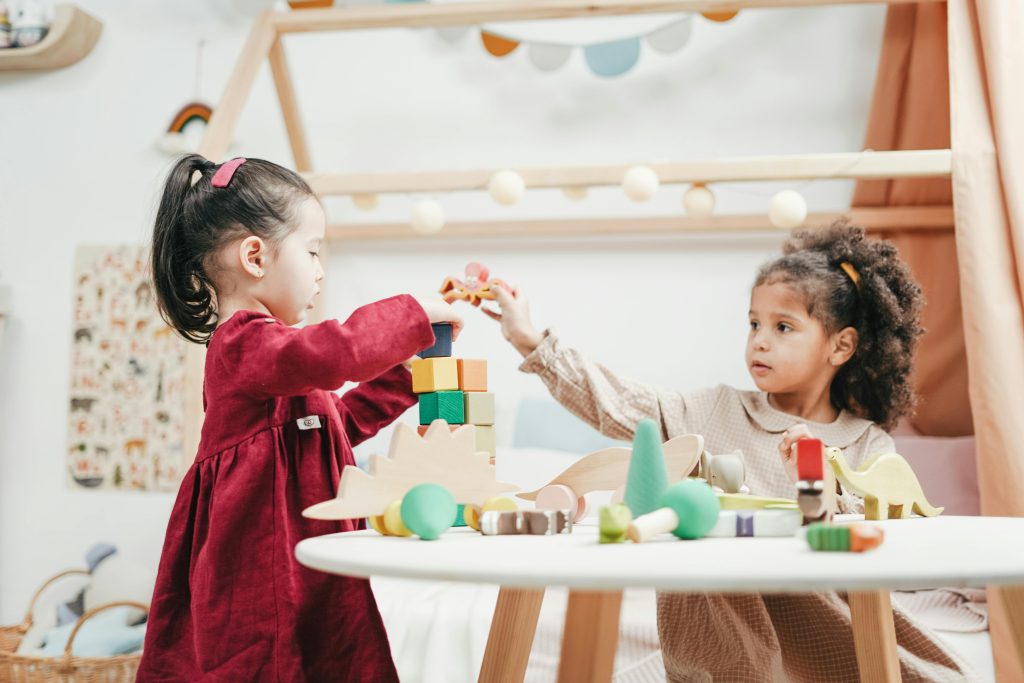
Why do some children seem to bounce back from setbacks while others struggle to cope? Whether it’s a scraped knee, a disrupted routine, or something more serious, kids respond to life’s challenges in very different ways. That difference often comes down to resilience — the ability to adapt in the face of adversity.
But resilience isn’t something children are simply born with or without. It’s something that’s built – and it begins in the earliest years of life, embedded in the architecture of the developing brain.
The Brain Builds What It Experiences
From birth, and even before, a child’s brain is building itself in response to the world around them. Neural connections form rapidly in early life, especially in areas related to emotion, stress regulation, language, and social interaction. This process is heavily influenced by the child’s day-to-day experiences.
One of the most powerful forces shaping this architecture is what scientists call “serve and return” interactions. When a baby coos and a caregiver responds with eye contact, a smile, or gentle speech, the child’s brain forms and strengthens vital circuits. These responsive relationships create the foundation for skills like emotional regulation, impulse control, and empathy — all essential ingredients for resilience.
Think of the brain like a house: early experiences lay the wiring and framing. The stronger and more stable the structure is, the better prepared the child is to navigate future stressors.
Not All Stress Is Harmful, But Some Is
We often think of stress as bad, but some stress is essential for growth. A brief challenge, like learning to tie a shoe or getting a vaccination, can help build coping skills, especially when a caring adult is nearby to offer comfort and encouragement.
Researchers differentiate between three types of stress responses:
-
Positive stress is short-lived and mild, like the nerves before the first day of school.
-
Tolerable stress is more serious (like the loss of a pet), but with strong adult support, the brain recovers.
-
Toxic stress, however, is chronic, intense, and unbuffered — such as ongoing neglect, abuse, or severe family instability.
When a child experiences toxic stress without consistent, supportive relationships, the body’s stress response system (including the HPA axis) stays on high alert. This can disrupt brain development, particularly in areas like the amygdala, hippocampus, and prefrontal cortex, which are responsible for emotion, memory, and regulation. Over time, this increases the risk of mental health issues, learning difficulties, and chronic illness.
But here’s the hopeful part: relationships can protect the brain.
Relationships Are the Buffer That Builds Resilience
The single most powerful protective factor in a child’s life is a stable, supportive relationship with at least one caring adult. When a child feels safe and seen, even in the midst of difficulty, their brain learns: “I can handle hard things, and I don’t have to do it alone.”
This relational safety helps regulate the child’s stress response system, preventing the long-term impacts of adversity and encouraging healthy emotional development. Over time, these experiences create a blueprint for self-regulation, problem-solving, and optimism.
How to Build Resilience in Everyday Moments
You don’t need to be a neuroscientist or a perfect parent to help build your child’s resilience. What matters most is how you show up; consistently, compassionately, and responsively. Here are a few ways to support brain-based resilience:
-
Establish predictable routines
Children feel safer when they know what to expect. Routines provide structure and reduce anxiety. -
Be emotionally present
Acknowledge your child’s feelings without trying to immediately fix them. “You’re really sad about that,” goes a long way. -
Model calm during stress
Kids take their cues from adults. Your ability to stay grounded helps their nervous system regulate. -
Encourage independence, with support
Let them try (and sometimes fail) at age-appropriate challenges, knowing you’re there if they need help. -
Teach emotion language
Help your child name what they’re feeling. This builds self-awareness and reduces frustration.
It’s not about being perfect. It’s about showing up, again and again, with connection, curiosity, and care.
Resilience Starts Early – And Starts With Us
The early years offer a powerful window of opportunity. During this time, children’s brains are most adaptable, most responsive, and most influenced by the environments and relationships around them.
By fostering safety, connection, and emotional support from the start, we’re not just raising children who behave well or get good grades. We’re helping to build brains that are strong, flexible, and equipped to face life’s inevitable ups and downs.
Because resilience isn’t just a trait – it’s an architecture. And every caring moment helps lay another brick.
